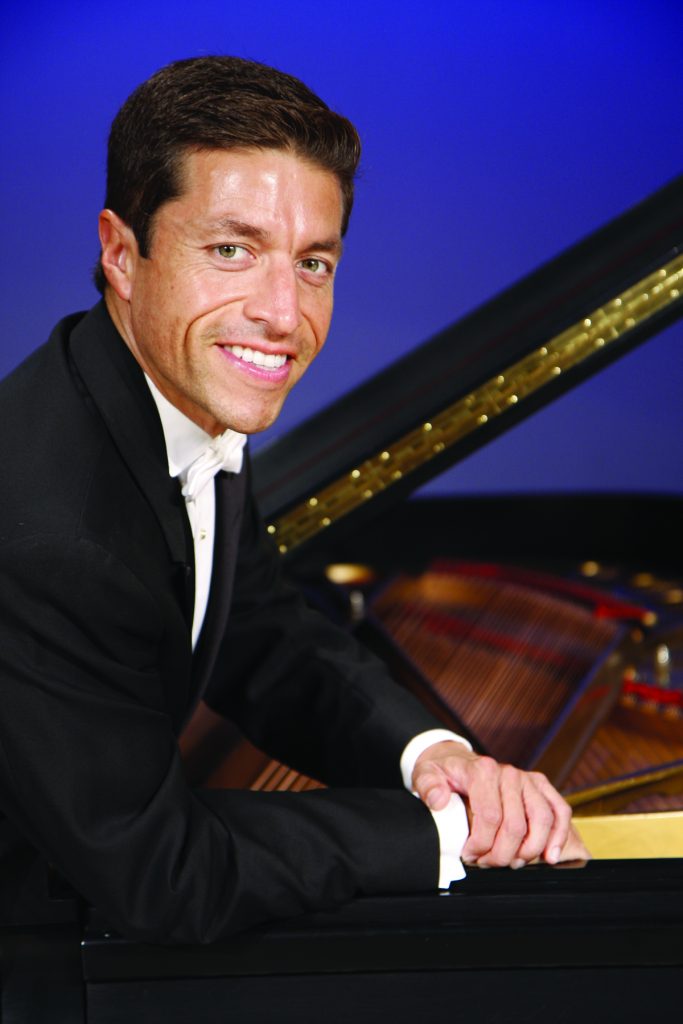Gustavo Romero Returns to La Jolla to Complete His Beethoven Sonata Cycle
Could there be a more auspicious beginning to San Diego’s rich summer festival season than Gustavo Romero’s all-Beethoven recital for the La Jolla Athenaeum’s Summer Festival 2022? With Romero’s exhilarating account of five Beethoven sonatas on Sunday, he set in motion his month-long recital series that will complete his traversal of the complete Beethoven piano sonata canon that he launched at the Athenaeum in 2019.
Romero’s undeniably persuasive approach to Beethoven unites seemingly opposite approaches: a radiant enthusiasm for the composer’s unpredictable and unorthodox musical vocabulary and a penetrating analysis of the purpose of every note in the score. Romero’s interpretation of every movement is both emotionally compelling and scrupulously detailed—in his performance the antipodal Dionysius and Apollo become bosom buddies.Not at all surprisingly, the familiar Waldstein Sonata, Op. 53, proved the star of this Beethoven survey. Romero’s bravura figurations and dramatic thematic statements in the opening “Allegro con brio” evoked the thrill of a California wild fire roaring through a canyon, without singeing the sonata’s structural underpinnings. He reminded us that Beethoven was not inventing the sonata form—just giving it a run for its money. From the Athenaeum’s Steinway he coaxed arched, shimmering melodies that the “Adagio molto” offered, reminding us how intimately the piano can speak in the cozy, book-lined Athenaeum room.
Romero had already taken his audience on the profound, revelatory journey of Beethoven’s slow movement “Largo e mesto” from the D Major Sonata, Op. 10, No. 3, a musical confession as poignant and eloquent as any Shakespearean soliloquy. Full of amazing invention—especially the jubilant opening “Presto”—this D Major Sonata deserves to be performed more frequently. And its closing “Rondo” movement replete with sly hesitations suggests that the composer is winking at his audiences some two centuries after the work was published. Perhaps if this sonata had a clever nickname like Hammerklavier or Appassionata it would appear more often on programs.
The Sonata in B-flat, Op. 22, written soon after the Sonata in D Major, displays a similar four-movement structure, although its slow movement invites serene contemplation rather than the D Major’s existential probing, and its closing “Rondo” sports a splashy, athletic fugue. In the Sonata in E Minor, Op. 90, we note the composer’s dramatic power expressed in far more precise terms, a sophisticated thematic concision that dispenses with the lavish thematic embroidery of the early sonatas. In this two-movement sonata, he also dispensed with the customary Italian movement titles and used plain German instructions, e.g. “Nicht zu geschwind” in place of “Allegro non troppo.” Romero’s suave legato line made the themes of this Sonata in E Minor luminous.
Although the high opus number of the G Major Sonata, Op. 49, No. 2, suggests a more mature work, this is actually one of the first two sonatas Beethoven ever wrote. He never intended to publish the work, an uncomplicated, cheerful sonata written as a gift for a friend’s young daughter. His brother Kasper Karl, however, discovered the original manuscript and after a few years found a publisher willing to publish the sonata. Romero used this lithe, spirited two-movement sonata to open his recital which, including his encore of Beethoven’s “Andante favori,” lasted just under three hours.
This solo recital by Gustavo Romero was presented by the Athenaeum Music and Arts Library in downtown La Jolla on Sunday, June 5, 2022, and will continue on June 12, 19 & 26.

Ken Herman, a classically trained pianist and organist, has covered music for the San Diego Union, the Los Angeles Times’ San Diego Edition, and for sandiego.com. He has won numerous awards, including first place for Live Performance and Opera Reviews in the 2017, the 2018, and the 2019 Excellence in Journalism Awards competition held by the San Diego Press Club. A Chicago native, he came to San Diego to pursue a graduate degree and stayed.Read more…

